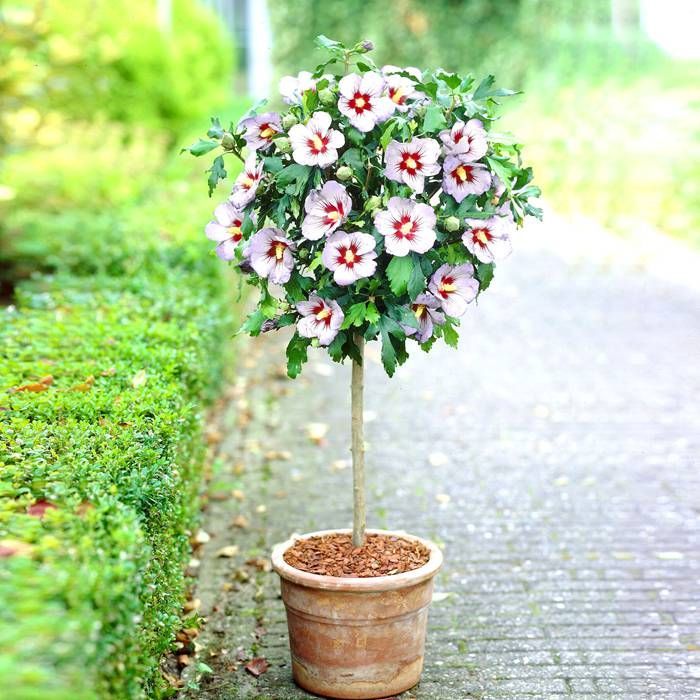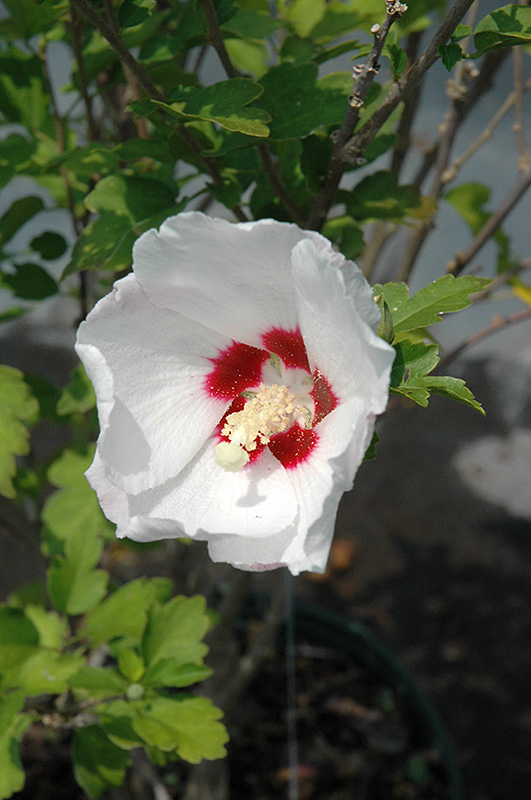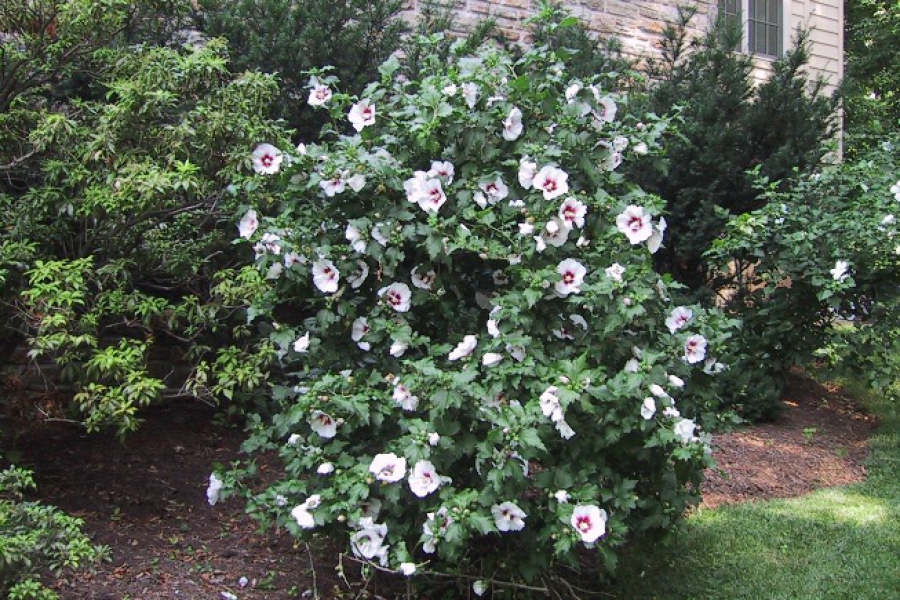How To Grow Hibiscus Syriacus Red Heart For
Hibiscus Syriacus Red Heart is a beautiful, deciduous shrub that is known for its large, showy flowers. The flowers can be white, pink, red, or purple, and they typically bloom from June to October. Hibiscus Syriacus Red Heart is relatively easy to grow, but it does require some basic care.
Choosing a Location
The first step to growing Hibiscus Syriacus Red Heart is to choose a location. These plants prefer full sun, but they can tolerate partial shade. They also need well-drained soil. If your soil is heavy or clayey, you may need to add some sand or compost to improve drainage.
Planting
Hibiscus Syriacus Red Heart can be planted in the spring or fall. When planting, dig a hole that is twice the width of the root ball. Place the plant in the hole and backfill with soil, tamping it down gently. Water the plant well.
Watering
Hibiscus Syriacus Red Heart needs regular watering, especially during the first year after planting. Water the plant deeply once a week, or more often if the weather is hot and dry. Mulching around the plant will help to retain moisture in the soil.
Fertilizing
Hibiscus Syriacus Red Heart benefits from regular fertilization. Feed the plant with a balanced fertilizer once a month during the growing season. You can use a water-soluble fertilizer or a granular fertilizer.
Pruning
Hibiscus Syriacus Red Heart can be pruned in the spring to remove any dead or damaged branches. You can also prune the plant to shape it or to control its size. If you live in an area with cold winters, you may need to prune the plant back to the ground in the fall.
Pests and Diseases
Hibiscus Syriacus Red Heart is relatively resistant to pests and diseases. However, it can be susceptible to aphids, scale insects, and mealybugs. If you see any pests on your plant, you can treat them with insecticidal soap or neem oil. Hibiscus Syriacus Red Heart can also be susceptible to powdery mildew, especially in humid climates. If you see powdery mildew on your plant, you can treat it with a fungicide.
With proper care, Hibiscus Syriacus Red Heart can thrive for many years. These beautiful plants will add a touch of color and elegance to any garden.
If you are looking for a beautiful and hardy shrub that will bloom from summer to fall, then the hibiscus syriacus "Red Heart" is a great option. This plant features white flowers with a striking red center, and it can grow up to 8 feet tall and 7 feet wide. It is also relatively easy to care for, and it is hardy in USDA zones 4-9.
To learn more about the hibiscus syriacus "Red Heart", please visit Home Gardening. This website has detailed information about the plant, including its care requirements, its growth habits, and its availability. You can also find photos of the plant in bloom, as well as reviews from other gardeners.
FAQ of hibiscus syriacus red heart
- What is Hibiscus syriacus Red Heart?
- Hibiscus syriacus Red Heart is a deciduous shrub that is native to Asia. It is known for its large, white flowers with red centers, which bloom from mid-summer to early fall. The shrub can grow up to 3 meters tall and has a spread of 1.8 meters. It is hardy in USDA zones 4-9.
- Where should I plant Hibiscus syriacus Red Heart?
- Hibiscus syriacus Red Heart prefers full sun and well-drained soil. It can tolerate some drought, but it is best to water it regularly during the summer months. The plant is also susceptible to wind damage, so it is best to plant it in a sheltered location.
- How do I care for Hibiscus syriacus Red Heart?
- In addition to providing full sun and well-drained soil, Hibiscus syriacus Red Heart also benefits from regular fertilization. You can fertilize the plant in early spring and again in late summer. The plant should also be pruned in late winter or early spring to remove dead or damaged branches.
- What are some common problems with Hibiscus syriacus Red Heart?
- The most common problems with Hibiscus syriacus Red Heart are pests and diseases. The plant is susceptible to aphids, spider mites, and whiteflies. It can also be affected by powdery mildew and leaf spot. If you notice any problems with your plant, you can treat them with insecticidal soap, neem oil, or fungicide.
- How can I propagate Hibiscus syriacus Red Heart?
- Hibiscus syriacus Red Heart can be propagated from seeds or cuttings. To propagate from seeds, sow them in a seed starting mix in early spring. The seeds should germinate in about 2-3 weeks. To propagate from cuttings, take a 6-8 inch cutting from a healthy plant in late spring or early summer. Dip the cutting in rooting hormone and plant it in a well-draining potting mix. The cutting should root in about 4-6 weeks.
Image of hibiscus syriacus red heart
10 different images of Hibiscus syriacus Red Heart that are free to use:
- Hibiscus syriacus Red Heart in full bloom. The flowers are a deep red color with a white center. The leaves are green and have a serrated edge.
- Close-up of a Hibiscus syriacus Red Heart flower. The petals are a deep red color and are slightly curled. The stamens are white and are in the center of the flower.

- Hibiscus syriacus Red Heart in a garden setting. The plant is in full bloom and is surrounded by other flowers and plants. The flowers are a deep red color and contrast nicely with the green leaves and other plants in the garden.

- Hibiscus syriacus Red Heart in a vase. The flowers are arranged in a vase and are surrounded by green leaves. The flowers are a deep red color and are very vibrant.
- Hibiscus syriacus Red Heart in a pot. The plant is in a pot and is on a patio. The flowers are a deep red color and are in full bloom. The leaves are green and have a serrated edge.

- Hibiscus syriacus Red Heart in a hedgerow. The plant is part of a hedgerow and is in full bloom. The flowers are a deep red color and contrast nicely with the green leaves of the other plants in the hedgerow.

- Hibiscus syriacus Red Heart in a field. The plant is in a field and is in full bloom. The flowers are a deep red color and stand out against the green grass of the field.

- Hibiscus syriacus Red Heart in a park. The plant is in a park and is in full bloom. The flowers are a deep red color and are surrounded by other flowers and plants in the park.
- Hibiscus syriacus Red Heart in a forest. The plant is in a forest and is in full bloom. The flowers are a deep red color and stand out against the trees and other plants in the forest.

- Hibiscus syriacus Red Heart in a vase on a table. The flowers are arranged in a vase and are on a table in a living room. The flowers are a deep red color and are very vibrant.

Post a Comment for "How To Grow Hibiscus Syriacus Red Heart For"